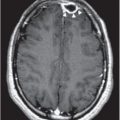| Age group | ||||
|---|---|---|---|---|
| Agents | ≤1 month | 1–5 months | ≥6 months and children | Adults |
| Primary agents | ||||
| Azithromycin | Recommended agent 10 mg/kg/d, once daily ×5 d | 10 mg/kg once daily ×5 d | 10 mg/kg (max 500 mg) once on d 1; then 5 mg/kg (max 250 mg) once on d 2–5 | 500 mg once on d 1; then 250 mg once on d 2–5 |
| Clarithromycin | Not recommended | 15 mg/kg/d divided BID ×7 d | 15 mg/kg/d (max 1 g/d) divided BID ×7 d | 1 g/d divided BID ×7 d |
| Erythromycin | Not preferred | 40–50 mg/kg/d divided QID ×14 d | 40–50 mg/kg/d (max 2 g/d) divided QID × 14 d | 2 g/d divided QID × 14 d |
| Alternate agent | ||||
| TMP–SMX | Contraindicated | Contraindicated at age <2 mo. At ≥2 mo, TMP 8 mg/kg/d–SMX 40 mg/kg/d divided BID ×14 d | TMP 8 mg/kg/d–SMX 40 mg/kg/d (max TMP 320 mg/d) divided BID ×14 d | TMP 320 mg-SMX 1600 mg/d divided BID ×14 d |
Abbreviations: TMP–SMX = trimethoprim–sulfamethoxazole; BID = twice a day; QID = four times a day.
a Recommendations of the Centers for Disease Control and Prevention and the American Academy of Pediatrics. Morbid Mortal Weekly Rep. 2005:54(RR-14):1–16.
Secondary sinusitis, otitis media, bronchitis, or pneumonia can complicate B. pertussis infection, which denudes ciliated epithelium and inhibits local phagocytic function. Pathogens of secondary infections are Streptococcus pneumoniae, Staphylococcus aureus, Haemophilus influenzae, and Moraxella catarrhalis. Convalescence from uncomplicated pertussis is protracted, with exacerbations of paroxysmal cough during subsequent respiratory illnesses; these are not caused by reinfection or reactivation of B. pertussis.
Control and prevention
Postexposure prophylaxis (PEP) using the same agents, doses, and duration as for treatment (Table 128.1
Stay updated, free articles. Join our Telegram channel

Full access? Get Clinical Tree





